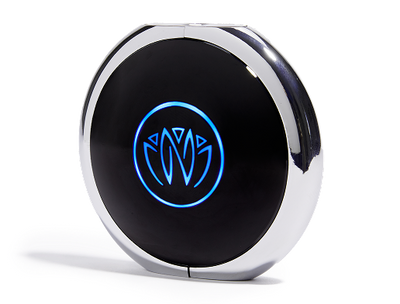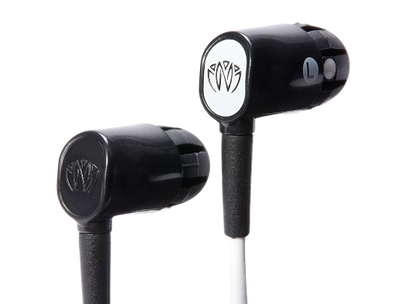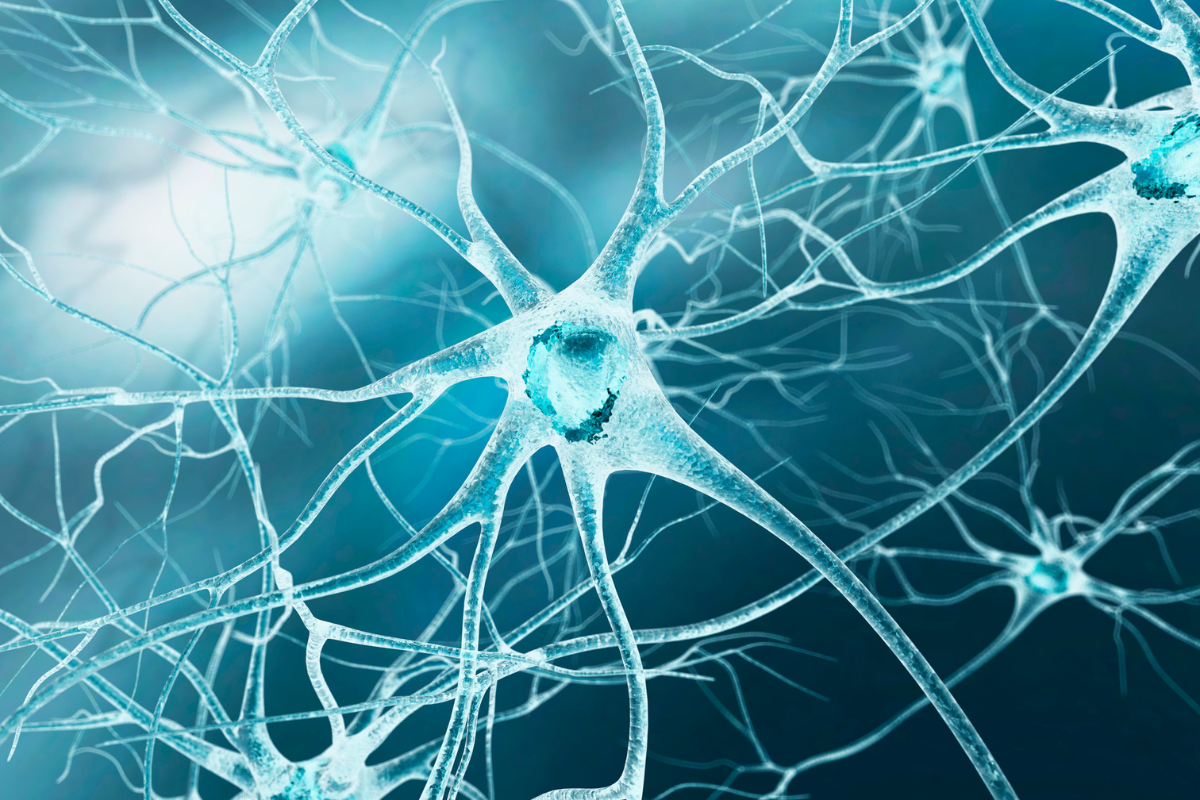Gatekeeping is out in 2023 and we want you to know everything there is to know about the vagus nerve and its potential for optimizing your health and wellness. With that in mind, today we're taking a deep dive into vagus nerve stimulation for wellness. Before we discuss how to stimulate the vagus nerve and how this can benefit you, however, we'll go back to the very beginning and cover the basics of the vagus nerve.
The Vagus Nerve: Introduction
The vagus nerve is the longest cranial nerve in your body and is an integral part of your parasympathetic nervous system. This powerful bundle of nerves runs from your brainstem to several major organs, including the heart, lungs, stomach and intestines. Thanks to these vital connections, the vagus nerve helps control many of your most essential functions, such as digestion, breathing rate, heart rate, and blood pressure.
What is VNS and How it Works?
Now that we know a bit about the vagus nerve and its vital functions, let's move on to vagus nerve stimulation (VNS). This type of therapy uses electrical stimulation to help activate the vagus nerve. There are some more invasive methods of doing so, including with surgical implantation of VNS devices. But there are also plenty of non-invasive ways to stimulate the vagus nerve (which we'll detail later in this post) including with a vagus nerve stimulation device like Xen by Neuvana.
To better understand why vagus nerve stimulation may be beneficial, let's look at the purpose of the vagus nerve in more detail. Generally speaking, this nerve helps regulate various aspects of your body and mind including mood, behavior, digestion, heart rate, and respiration. In some cases, however, these functions can become imbalanced or impaired due to various issues such as stress or illness. By stimulating the vagus nerve with VNS therapy, it may be possible to restore balance and boost overall wellness in some people.
The Parasympathetic Nervous System
We should also outline the parasympathetic nervous system (PNS) and its role in explaining why VNS can prove so helpful.
The PNS helps regulate your body's response to stress and activates the "rest and digest" mode. As opposed to the sympathetic nervous system (SNS) which activates the fight or flight response, the PNS is all about calming down the body and allowing it to rest, relax and recover.
Fight or flight vs. rest and digest
The fight or flight response gets a lot of attention; odds are, you're more familiar with this response than rest and digest. To recap, this is the response that helps us survive danger. Activation of the sympathetic nervous system sparks the release of adrenaline and cortisol (the stress hormone) which gives us the energy and focus to fight or flee from a threat.
For example, if we are running from a tiger or another threat, our heart rate and breathing will speed up, we will become more alert, and our muscles will tense up. This is the SNS kicking into action.
In contrast, when we're safe and secure, our body switches back over to rest and digest mode. When we're in this mode, the PNS activates, and our heart rate lowers, we become relaxed and digestion is stimulated.
The vagus nerve plays a vital role in this transition from fight or flight to rest and digest by sending signals that tell your body to relax.
Of course, the fight or flight response serves a fundamental purpose! There are times when this response is incredibly beneficial, such as when you're in a dangerous situation. But it can also become problematic if it's over-activated. You end up in a constant state of stress and anxiety which can have serious physical and mental health implications.
This is where VNS therapy can help many people. By stimulating the vagus nerve, it may be possible to help transition your body from fight or flight back to rest and digest mode. Then, you can relax, recuperate, and restore balance in your body. It's also important to note this type of therapy may also benefit people who suffer from chronic illnesses such as depression, epilepsy, cluster headaches, fibromyalgia, Crohn's disease and more. So next, let's look at how vagus nerve stimulation works for these conditions.
Vagus Nerve Stimulation for Wellness
Now that we have a basic understanding of the vagus nerve and its function in the PNS, let's discuss how VNS therapy can be used to promote overall wellness. This includes specific conditions such as depression and anxiety, epilepsy, cluster headaches, fibromyalgia, and Crohn's disease.
Depression and anxiety
For conditions such as depression, VNS sends electrical impulses to the brain, which then triggers the release of neurotransmitters like serotonin and dopamine. These neurotransmitters are important for regulating mood. So, by increasing their production, it may be possible to reduce symptoms of depression. It's also thought that VNS may be able to help restore balance in other areas, such as sleep and appetite, which can be impacted when someone is suffering from depression.
Epilepsy
Epilepsy was one of the first FDA-approved uses for VNS therapy. It is believed that stimulating the vagus nerve sends signals to the brain which can help regulate abnormal electrical activity in the brain associated with epilepsy.
Cluster headaches
VNS therapy may also be beneficial for people suffering from cluster headaches as it appears to reduce the intensity and frequency of pain associated with them.
As this 2005 study found:
"Vagus nerve stimulation (VNS) is an effective treatment for drug-refractory epilepsy and possibly depression and it also has documented analgesic effects. These observations suggested a possible role for VNS in treating severe refractory headaches, and led to a trial of VNS in patients with such headaches. VNS was implanted in four men and two women with disabling chronic cluster and migraine headaches. In one man and one woman with chronic migraines VNS produced dramatic improvement with restoration of ability to work. Two patients with chronic cluster headaches had significant improvement of their headaches. VNS was well tolerated in five patients, while one developed nausea even at the lowest current strength. In conclusion, VNS may be an effective therapy for intractable chronic migraine and cluster headaches and deserves further trials."
Fibromyalgia
VNS has also been found to have potential for treating adults with severe fibromyalgia, a condition associated with widespread pain, sleep disturbances, and cognitive dysfunction. For example, this 2011 study suggests VNS may reduce chronic pain associated with the condition and improve mood and quality of life for sufferers.
Crohn's Disease
Finally, VNS has also been found to have potential benefits in treating Crohn's disease. This condition is an inflammatory bowel disorder that can cause abdominal pain, nausea, fatigue and weight loss. Stimulating the vagus nerve appears to be able to reduce inflammation in the gut which could help alleviate some of these symptoms.
This brings us to two important topics to cover next: the gut-brain axis and the vagus nerve's role in treating inflammatory conditions.
The Gut-Brain Axis
There's a strong connection between the gut and the brain, referred to as the "gut-brain axis." This refers to how signals from our gut can impact our mental state in various ways, such as influencing mood and anxiety levels. The vagus nerve is a big player in this communication, sending signals from the gut to the brain which can then be interpreted and responded to accordingly.
For example, when we eat, the vagus nerve signals to the brain about how much food is being digested and what nutrients are present. This then helps regulate our appetite and drives hunger or satiety cues accordingly.
As such, conditions like gastroparesis (stomach paralysis) can lead to difficulty managing appetite and weight, as the vagus nerve is not able to send proper signals to the brain. With that in mind, VNS is also used to treat gastroparesis, as it can help stimulate the vagus nerve and restore its signaling capabilities.
The Vagus Nerve and Inflammation
The vagus nerve is also involved in our body's response to inflammation. One example is cytokines. These are molecules secreted by our immune system when we're fighting an infection or trauma. The vagus nerve then sends signals to the brain about the presence of these cytokines, which can trigger a "fight or flight" response and cause inflammation throughout the body.
However, VNS therapy appears to be able to reduce this inflammatory response by inhibiting cytokine production.
Consider the findings from this 2009 study, which sum up the relationship between the vagus nerve and its potential for treating certain inflammatory conditions:
"With the discovery that the vagus nerve has an immunomodulatory function comes the possibility of developing novel therapeutic agents for the treatment of inflammatory disease. Knowledge of the immunosuppressing function of the efferent vagus nerve, termed the 'cholinergic anti-inflammatory pathway', represents a new approach to targeting the regulation of pro-inflammatory cytokine production. VNS has been shown to decrease cytokine production, attenuate the development of shock, and increase survival in animal models of sepsis, haemorrhagic shock, and ischaemia/reperfusion."
Research on VNS
Along with the well-documented benefits of VNS for treating certain neurological disorders and conditions associated with inflammation, there is also evidence to suggest it could be very useful for boosting general well-being. For instance, research has found that stimulating the vagus nerve can improve heart rate variability (HRV), which is an indicator of overall physical health.
Rheumatoid arthritis is another condition that could potentially be improved with VNS. As discussed above, stimulating the vagus nerve has been found to reduce inflammation in some regions of the body, which could lead to relief from joint pain and stiffness.
It's particularly exciting how VNS is proving to be a promising option not only for those suffering from serious medical conditions, but also for anyone who wants to improve their overall health and wellness. Many people who try non-invasive vagus nerve stimulation report an overall brighter mood, faster recovery, better sleep, more tranquility, less stress, and increased energy levels. This suggests that VNS may be a great tool for helping us live healthier, more balanced lives.
Let's talk about some of these benefits next!
VNS and Stress Management
Couldn't we all use a bit of stress relief? That's why VNS has become increasingly popular for helping people manage their stress levels more effectively. By stimulating the vagus nerve, we can lower our body's cortisol production and help keep our stress responses in check. In turn, we can experience improved cognition, a brighter mood, and more balanced energy levels.
Cognition
VNS may also play a role in improving memory and cognitive functioning. For example, research suggests stimulating the vagus nerve can increase blood flow to certain areas of the brain, which could lead to improved mental clarity and focus.
Mood
If you're looking for a natural way to lift your mood, VNS could be the answer. Studies have found that stimulating the vagus nerve can help regulate neurotransmitters like serotonin and dopamine, linked to overall feelings of well-being.
Energy
Many people also find their energy levels increase after VNS. One explanation for this is the improved sleep quality and reduced inflammation that can come with VNS therapy.
VNS as a Natural Remedy
While VNS is often used in conjunction with other treatments, it's starting to be seen as a viable option for those looking for natural remedies. By stimulating the body's own healing mechanisms, VNS can positively affect our bodies without any of the side effects that come with some medications.
Of course, you and your doctor should discuss the possible benefits of VNS before trying it. But if you're looking for a new way to manage stress, improve mood and cognition, and increase energy levels, it's an option worth considering.
It's apparent that vagus nerve stimulation has many potential applications in terms of overall wellness and health. As research into this area continues to expand, we may find out even more about how it can help us optimize our wellness, and in turn, our lives.
Vagus Nerve Stimulation: Methods
As promised, we will now discuss the different methods of vagus nerve stimulation.
Surgical VNS
In the case of severe medical conditions such as epilepsy or treatment-resistant depression, more invasive VNS methods may be called for. Similar to a pacemaker, a VNS device can be implanted under the skin near the vagus nerve. This is a more permanent solution and can be adjusted over time.
Transcutaneous VNS (tVNS)
For those looking for a less invasive option, tVNS involves placing small electrodes on the skin's surface above the vagus nerve. These electrodes then deliver mild electrical pulses to stimulate the nerve without surgical implantation.
Xen by Neuvana vagus nerve stimulating headphones are one example of tVNS technology. The headphones emit pulses of non-invasive electrical stimulation to the vagus nerve with every beat of your favorite music, helping you reach a deeper state of relaxation and improved mood.
Cold exposure
With cold exposure becoming increasingly popular for its health benefits, researchers have started exploring the potential of using it as a form of VNS. By exposing yourself to cold temperatures like ice or snow, you can stimulate the vagus nerve and potentially reap the same benefits that come with tVNS or surgical VNS.
If you don't want to plunge your whole body into a cold body of water, you might also try placing a cold towel or ice pack on your neck and chest when you want to soothe your nervous system.
Humming, singing, and chanting
Another non-invasive (and fun!) way to stimulate the vagus nerve is through humming, singing, and chanting. By vibrating your vocal chords, you can activate the nerve endings in your throat region which are connected to the vagus nerve.
Yoga
Along with its other health benefits, yoga can also help stimulate the vagus nerve. Certain poses like the bridge, cobra and cat-cow can help create a gentle stretching sensation on either side of the neck connected to the nerve.
Massage therapy
Another way to stimulate this nerve non-invasively is through massage therapy. Because it helps relax both body and mind, massage has been found to reduce inflammation and improve overall well-being. As an added bonus, certain types of massage (like acupressure) focus on specific points near the vagus nerve which can further trigger its activation.
Visit this article next to read about acupuncture and the vagus nerve.
Final Thoughts: Vagus Nerve Stimulation for Wellness
The potential applications of vagus nerve stimulation are vast, not to mention exciting. From treating serious conditions like epilepsy and depression to improving mood, energy levels, and overall well-being, VNS is a versatile treatment from which almost all of us could reap some rewards. With so many different methods available, from simple facial cold exposure to more complex surgical implantation, there's something for everyone looking for an alternative way to enhance their health and wellness.
As always, it's important to speak with your doctor before making any changes to your healthcare routine. That said, if you're looking for natural ways to improve your physical and mental well-being, VNS might just be the answer you've been searching for all along. Learn more about Xen by Neuvana and the science supporting VNS today.





